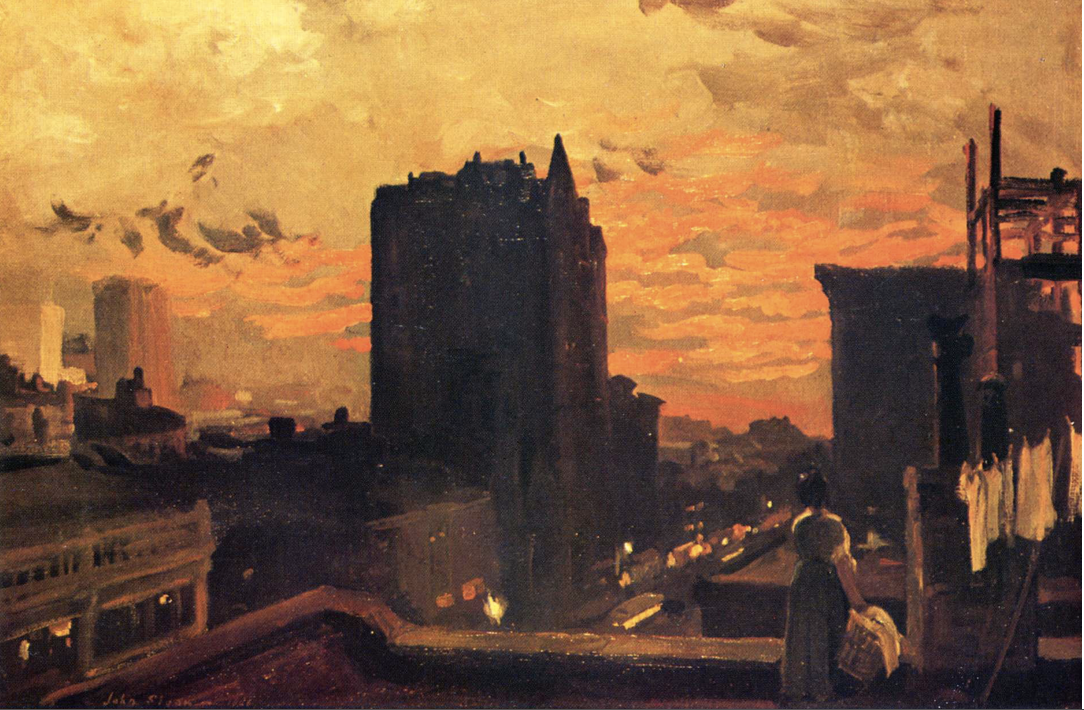John Sloan, Sunset, West Twenty-Third Street, 1906
24.375 x 36.25 in.
Today, another Ashcan painter, another view of New York. After yesterday's post about George Luks, I came across this remarkable painting. John French Sloan (1871-1951) was an American painter and a founder of the Ashcan School. He grew up in Pennsylvania and began his artistic career there before moving to New York. After dropping out of school at age sixteen to support his family, Sloan drew, honing his skills by making copies of Dürer and Rembrandt. He soon began selling his own etchings and got a job as an illustrator for a greeting card company. He switched to newspaper work, in the art department of the Philadelphia Enquirer and began taking night classes at Pennsylvania Academy of Fine Arts. Although he worked steadily in both painting and illustration, Sloan did not establish a name for himself until he moved to New York City in 1904. He soon joined the Ashcan mission of portraying New York realistically and began producing effective works such as Dust Storm, Fifth Avenue and Wake of the Ferry. Sloan became discontent with the "Plutocracy's government," as he called it, and joined the Socialist party with his wife. These feelings can be seen some of his work, as he strove to portray the lives of the masses. Sloan contributed anti-war and anti-capitalist illustrations to Socialist magazines, but always avoided propaganda on principle. Sloan was also a successful landscape and portrait painter. Among his best known works are McSorely's Bar and Sixth Avenue Elevated at Third Street. Sloan committed himself to depicting everyday scenes, and always maintained that his work was sympathetic but was not intended to contain social consciousness. This seems hard to believe considering Sloan's political engagement, but does appear to hold true for Sunset, West Twenty-Third Street. This is, quite simply, a stunning sunset over New York City. The color and shape of the clouds are in perfect balance to convey their luminous appearance. Below the glowing clouds we see city buildings, largely in silhouette. We stand on one of these rooftops, watching with a woman who has paused for the sunset in the midst of her laundry.

No comments:
Post a Comment